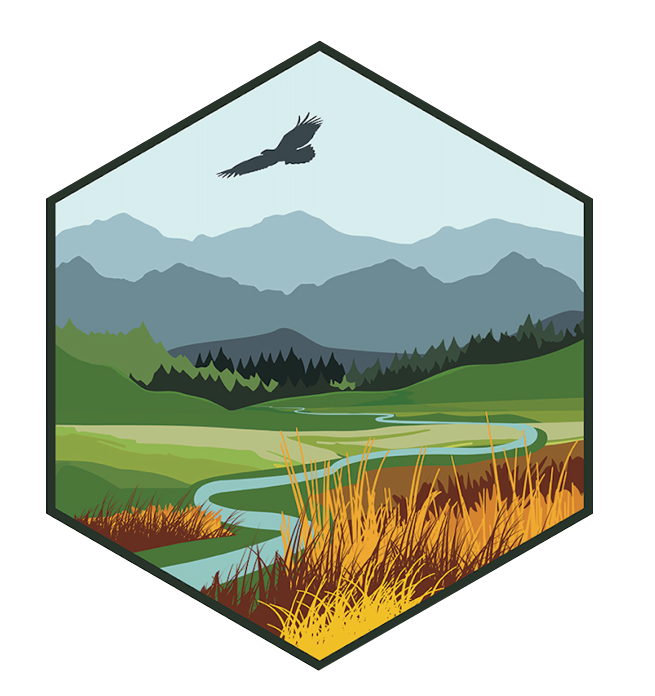Species distribution models (SDMs) are commonly used to assess potential climate change impacts on biodiversity, but several critical methodological decisions are often made arbitrarily. We compare variability arising from these decisions to the uncertainty in future climate change itself. We also test whether certain choices offer improved skill for extrapolating to a changed climate and whether internal cross-validation skill indicates extrapolative skill. We compared projected vulnerability for 29 wetland-dependent bird species breeding in the climatically dynamic Prairie Pothole Region, USA. For each species we built 1,080 SDMs to represent a unique combination of: future climate, class of climate covariates, collinearity level, and thresholding procedure. We examined the variation in projected vulnerability attributed to each uncertainty source. To assess extrapolation skill under a changed climate, we compared model predictions with observations from historic drought years. Uncertainty in projected vulnerability was substantial, and the largest source was that of future climate change. Large uncertainty was also attributed to climate covariate class with hydrological covariates projecting half the range loss of bioclimatic covariates or other summaries of temperature and precipitation. We found that choices based on performance in cross-validation improved skill in extrapolation. Qualitative rankings were also highly uncertain. Given uncertainty in projected vulnerability and resulting uncertainty in rankings used for conservation prioritization, a number of considerations appear critical for using bioclimatic SDMs to inform climate change mitigation strategies. Our results emphasize explicitly selecting climate summaries that most closely represent processes likely to underlie ecological response to climate change. For example, hydrological covariates projected substantially reduced vulnerability, highlighting the importance of considering whether water availability may be a more proximal driver than precipitation. However, because cross-validation results were correlated with extrapolation results, the use of cross-validation performance metrics to guide modeling choices where knowledge is limited was supported.
Birds
Abstract from Ecosphere: The Prairie Pothole Region, situated in the northern Great Plains, provides important stopover habitat for migratory shorebirds. During spring migration in the U.S. Prairie Potholes, 7.3 million shorebirds refuel in the region's myriad small, freshwater wetlands. Shorebirds use mudflats, shorelines, and ephemeral wetlands that are far more abundant in wet years than dry years. Generally, climate change is expected to bring warmer temperatures, seasonality shifts, more extreme events, and changes to precipitation. The impacts to wetland habitats are uncertain. In the Prairie Potholes, earlier spring onset and warmer temperatures may advance drying of wetlands or, alternately, increased spring precipitation may produce abundant shallow‐water habitats. To look at the availability of habitats for migratory shorebirds under different climate regimes, we compared habitat selection between a historic wet year and a dry year using binomial random‐effects models to describe local and landscape patterns. We found that in the dry year shorebirds were distributed more northerly and among more permanent wetlands, whereas in the wet year shorebirds were distributed more southerly and among more temporary wetlands. However, landscape‐scale variation played a larger role in the dry year. At the local wetland scale, shorebirds selected similarly between years—for shallower wetlands and wetlands in croplands. Overall, while shorebirds were sensitive to local habitat conditions, they exhibited a degree of adaptive capacity to climate change impacts by their ability to shift on the landscape. This indicates an avenue through which management decisions can enhance climate change resilience for these species given an uncertain future—by preserving shallow‐water wetlands in croplands throughout the landscape.
The North American Prairie Pothole Region (PPR) is an expansive region that covers parts of five Midwestern states and three Canadian provinces. This region contains millions of wetlands in which waterfowl breed and from which 50-80% of the continent's migratory ducks originate each year. Previous modeling efforts indicated that climate change would result in a shift of suitable waterfowl breeding habitat from the central PPR to the southeastern portion of the region, an area where the majority of wetlands have been drained. If this future scenario were to materialize, a significant restoration effort would be needed in the southeastern PPR to support waterfowl production. However, more recent research has revealed that changes in climate are influencing these critical wetland habitats in novel ways, and previous modeling results may no longer be valid. Land and natural resource managers are in need of more accurate, up-to-date scientific information in order to make fully informed planning decisions about these important wetlands and waterfowl habitat. This project aimed to improve our understanding of how future climate changes might impact wetland ecosystems and waterfowl habitats of the PPR. Project researchers used a newly developed wetland simulation model to simulate hydrologic and chemical conditions of prairie pothole wetlands under various climate change scenarios. Results were compared to results from previous modeling and analysis efforts to gain a better understanding of future impacts to wetlands and the ability of prairie pothole wetlands to continue meeting the habitat needs of breeding waterfowl. Throughout this effort, the project team worked directly with land managers from the U.S. Fish and Wildlife Service’s Habitat and Population Evaluation Team and Chase Lake Wetland Management District in North Dakota to ensure that study results and science products can directly inform climate adaptation plans for waterfowl habitat.
The purpose of this project was to estimate and map the probability that grassland converts to cropland in the northern plains and prairie region given potential climate change. This region provides critical breeding and migratory habitat for waterfowl and other wetland-dependent species, and is also a highly productive agricultural region. Generally, the regional effects projected by climate models are increasing temperatures and more variable precipitation, which could provide incentives for private landowners to convert native and managed grassland to intensive cropland. Conversion of grassland to cropland can result in habitat loss for dependent species and the degradation of a range of ecosystem services. If climate change alters the spatial distribution of both agricultural land use and suitable habitat, land managers and conservationists may need to alter efforts to offset the negative consequences of combined climate and land-use change on habitats and dependent species. The land-use change projections associated with this report provide information for such management efforts.
Prairies were once widespread across North America, but are now one of the most endangered and least protected ecosystems in the world. Agriculture and residential development have reduced once extensive prairies into a patchwork of remnant prairies and “surrogate” grasslands (e.g., hayfields, planted pastures). Grassland ecosystems and many grassland-dependent birds are also particularly vulnerable to rapid shifts in climate and associated changes in drought and extreme weather. The Central Flyway is a vast bird migration route that comprises more than half of the continental U.S., and extends from Central America to Canada, and harbors the greatest diversity of grassland birds in North America. Throughout this region, numerous agencies and organizations are entrusted with the management of grassland ecosystems and the species that depend on them in landscapes extensively altered by human activities. Today, they face the additional challenge of managing these ecosystems in the face of a rapidly changing climate. The goal of this project is to synthesize the vulnerability of grassland ecosystems to climate change across the Central Flyway, with an emphasis on grassland-dependent migratory birds. Researchers will synthesize the state of the science, including providing a robust assessment of how climate variables directly and indirectly (via land use change) affect grassland habitats and migratory bird populations. Researchers will also review current and future adaptation strategies for the conservation of grassland ecosystems and grassland-dependent birds. This effort will result in a synthesis of key management strategies and future research needs related to the conservation of migratory grassland bird populations in the Central Flyway in the face of climate change.
Abstract (from Diversity and Distributions): Aim Surrogate species can provide an efficient mechanism for biodiversity conservation if they encompass the needs or indicate the status of a broader set of species. When species that are the focus of ongoing management efforts act as effective surrogates for other species, these incidental surrogacy benefits lead to additional efficiency. Assessing surrogate relationships often relies on grouping species by distributional patterns or by species traits, but there are few approaches for integrating outputs from multiple methods into summaries of surrogate relationships that can inform decision‐making. Location Prairie Pothole Region of the United States. Methods We evaluated how well five upland‐nesting waterfowl species that are a focus of management may act as surrogates for other wetland‐dependent birds. We grouped species by their patterns of relative abundance at multiple scales and by different sets of traits, and evaluated whether empirical validation could effectively select among the resulting species groupings. We used an ensemble approach to integrate the different estimated relationships among species and visualized the ensemble as a network diagram. Results Estimated relationships among species were sensitive to methodological decisions, with qualitatively different relationships arising from different approaches. An ensemble provided an effective tool for integrating across different estimates and highlighted the Sora (Porzana carolina), American Avocet (Recurvirostra Americana) and Black Tern (Chlidonias niger) as the non‐waterfowl species expected to show the strongest incidental surrogacy relationships with the waterfowl that are the focus of ongoing management. Main conclusions An ensemble approach integrated multiple estimates of surrogate relationship strength among species and allowed for intuitive visualizations within a network. By accounting for methodological uncertainty while providing a simple continuous metric of surrogacy, our approach is amenable to both further validation and integration into decision‐making.
From Summary: "The North American Prairie Pothole Region (PPR) is an expansive region that covers parts of five Midwestern states and three Canadian provinces. The region contains millions of wetlands that produce between 50–80% of the continent’s waterfowl population each year. Previous modeling efforts indicated that climate change would result in a shift of suitable waterfowl breeding habitat from the central PPR to the southeast portion of the region where over half of wetlands have been drained. The implications of adopting these projections would require a massive investment in wetland restoration in the southeastern PPR to sustain migratory waterfowl populations at harvestable levels. We revisited these projections using a newly developed model for simulating prairie-pothole wetland hydrology in combination with the most up-to-date climate model projections to estimate how future climate may impact the distribution of waterfowl-breeding habitat. We also presented our findings in changes to wet May ponds, which is a metric that is used by managers at the US Fish and Wildlife Service to estimate waterfowl breeding populations to establish harvest regulations. Based on the output of 32 climate models and 2 emission scenarios we found a projected change in wet May pond numbers from -23% to +.02% when comparing the most recent climate period (1989–2018) to the end of the 21st century (2070–2099). We also found no evidence that the distribution of wet May ponds will shift in the future. These results suggest that management and conservation strategies for wetlands in the PPR that focus on areas with the high densities of intact wetland basins support large numbers of breeding duck pairs and will likely be the most successful in maintaining habitats critical to continental waterfowl populations."

